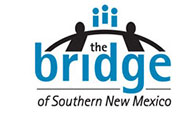Connecting the dots, building awareness to ignite workforce talent
Las Cruces Sun-News – Learn & Earn Column
March 4, 2018
“There are no jobs.”
How many times have you heard that when conversations turn to the exodus of young families from New Mexico, or the state’s high poverty rates, or some national ranking that paints a negative picture of some facet of life here?
Indeed, it is the perception that “there are no jobs” that keeps one in five people from feeling like they can get a job, according to a survey conducted by Las Cruces’ Workforce Connections office. It’s the narrative that our young people hear over and over again, leading them to plan a life outside of New Mexico well before they graduate.
It’s also the misperception that holds back our county and state economically.
It’s not that there are no jobs, it’s that there seems to be an overarching lack of awareness of the jobs that are here, as well as a misalignment between the jobs we do have and the skills and qualifications of those who could step into those jobs.
Labor Market Information for the Las Cruces MSA for December 2017 revealed an unemployment rate of 6.1 percent, or 5,896 people seeking employment. But here’s the rub: of the 3,775 positions just in the New Mexico Workforce Connections data base, about 450 require a high school diploma or equivalent – but there are 4,000 job-seekers who meet that definition.
This is where we have work to do to help those 4,000 who could step into higher skilled, higher paying jobs to get the education and skills they need to fill the other 3,325 jobs.
So, back to this “there are no jobs” narrative. In just a sampling of Burning Glass data from our region, there were 6,300 job postings for just registered nurses in 2017, and more than 12,300 healthcare-related postings in the top 30 job postings. There are literally thousands more across the healthcare industry. There were 1,300 postings for heavy and tractor-trailer drivers, and more than 2,600 in various aspects of Transportation and Logistics. Employers were looking for 1,300 managers in a host of fields. Across the region, there was a total of 48,000 job postings in 2017.
I think it’s safe to say that there are jobs here.
Once we put this false narrative to rest, we can begin to build a future based on real information about real opportunities. We can stem the tide of “brain drain.” We can help our young people, the underemployed, and low-skilled workers take advantage of the assets we already have to strengthen their earning power, their families, and become the workforce that ignites economic change across the region.
Thanks to the unprecedented work of a committed set of partners, the landscape for change has become clear. The Workforce Talent Collaborative has been working alongside The Bridge of Southern New Mexico for more than a year to understand the barriers to success while building pathways to opportunity in eight target industries that are here, offer higher-skilled, higher-wage jobs, and are poised for growth: healthcare, aerospace, defense, transportation and logistics, advanced manufacturing, energy, digital media, and value-added agriculture.
Interestingly, the top barrier to opportunity and economic development the group identified isn’t what you’d think.
Sure, there are challenges that must be addressed like transportation, the need for (and high cost of) childcare, as well as the “soft” or “employability” skills that seem to be lacking in young workers. However, the top barrier actually explains the misconception.
The number-one thing standing in our way is simply lack of awareness.
Until recently, an overarching lack of awareness and communication between all members of the workforce continuum has slowed access and advancement for potential workers. Which is why the contribution made to our community by the Workforce Talent Collaborative is so significant. The Collaborative has done the hard work of connecting the dots that will close our gaps, as well as make recommendations based on best practices to construct a workforce system that maximizes opportunity for those who live here.
Funded by grants from the W.K. Kellogg Foundation, El Paso Electric, and US Bank, the Collaborative’s planning phase to map out the workforce system is very nearly complete. Now it’s time literally “bridge” these awareness gaps and move students and youth, families, educators, nonprofits, state agencies, and employers, to take advantage of all this system has to offer them.
This column will become a place where, every month, we attempt to close these gaps and inform a vibrant workforce ecosystem that captures the interest and involvement of current and future talent, propelling our greatest resource, our people, toward opportunity while boosting regional prosperity that fuels economic transformation for us all.

